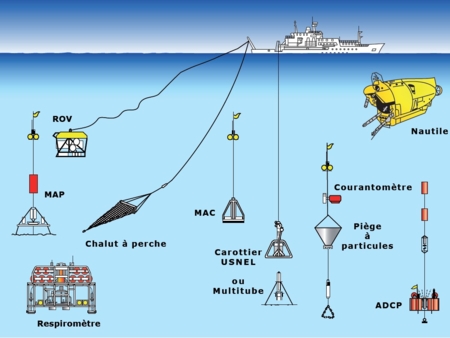Description of the microbial diversity associated with Chorocaris chacei : a possible double symbiosis
Deep-sea ocean may soon represent deep-sea mining industry future. However, these environments are still poorly explored. Therefore, mining issues on deep-sea ecosystems are not yet evaluated, mostly on their main target: the deep-sea hydrothermal vents. Our study focused on a shrimp, Rimicaris chacei and to its potential symbioses with chemoautotrophic microbial communities.This shrimp have a mixotrophic behaviour, mixed between necrophagy and symbiosis. It could therefore have a potential trophic plasticity in case of steep environmental modifications. Moreover, C. chacei is closely related to Rimicaris exoculata, in terms of both phylogeny and ecology. This could let suppose a common symbiosis history, presenting nowadays two different levels of association.Two potential symbiotic microbial communities have been studied here, one located in the cephalothorax and the other in the digestive tract, using two complementary approaches: microscopy and molecular analyses. Two main points have been focused in our work: (1) Describing the shrimp and its associated microbial communities in terms of morphology, repartition and phylogeny. (2) Using a metabarcoding approach to evaluate the similarity level shared between C. chacei and R. exoculata associated microbial communities. We intend to analyse a possible genetic variation among symbionts of the two hosts, whether it would be linked to the hydrothermal vent origin (geography), or to the studied shrimp (host), or both of them. As bioinformatics was an important part of my work to analyse barcoding/metabarcoding data, a part of my thesis is dedicated to explain these analyses as a tutorial for all future users.







